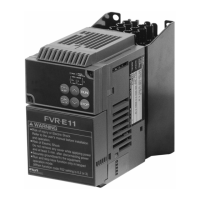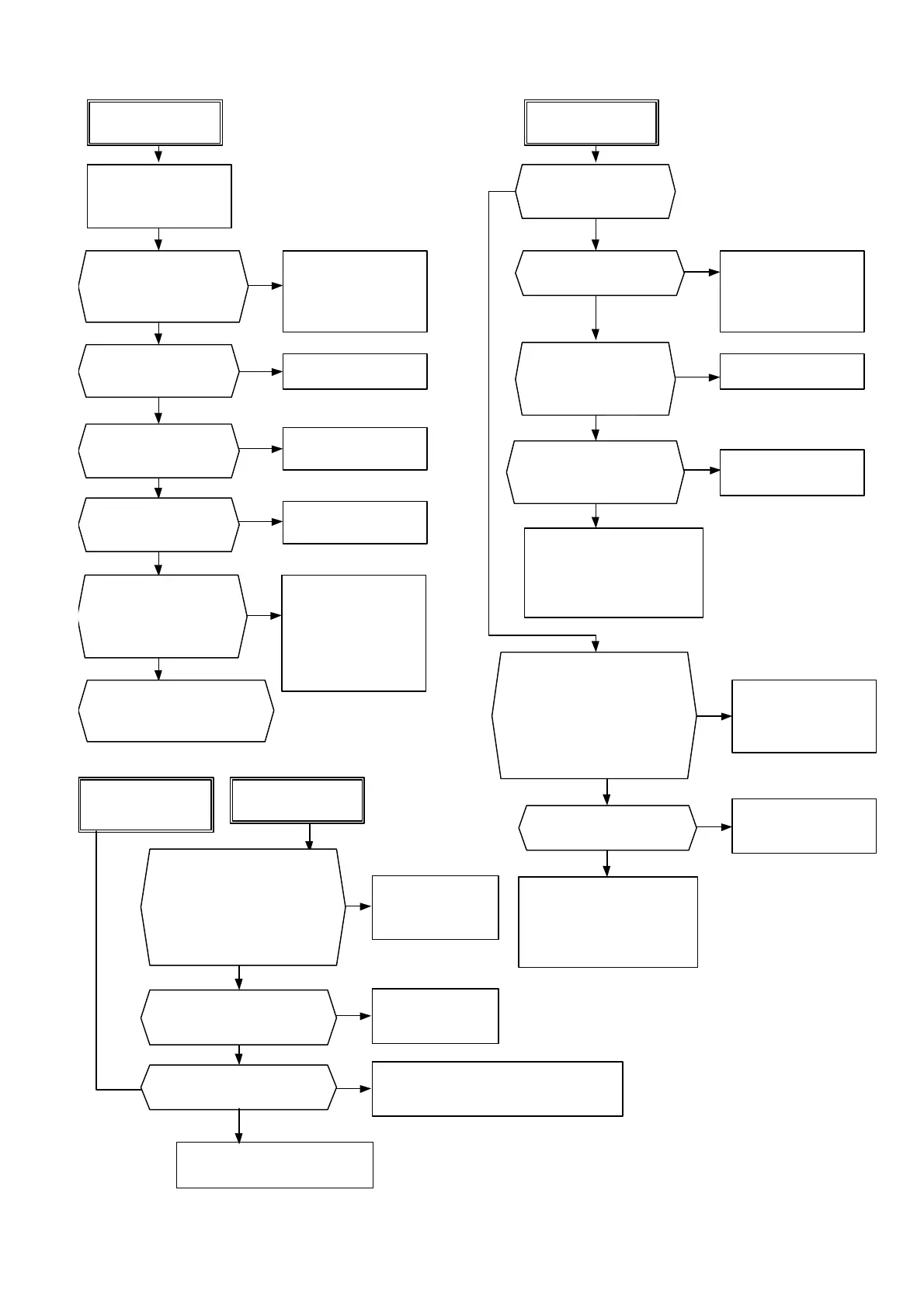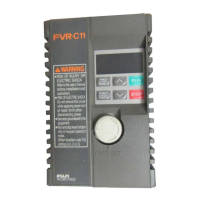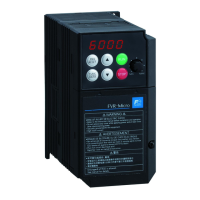7-3
(4) Inverter inside overheat or heat sink overheat (5) Eternal alarm input
YES
Heat sink
overheat OH1
Confirm the heat
sink temperature at
the keypad panel.
(H40)
Check if the load
exceeds the
allowable limit.
YES
Check if the
temperature of the
heat sink is -10 ゜C
or lower.
he detection circuit
in the printed circuit
board is faulty.
Contact Fuji
Electric.
NO
YES
Reduce the load.
Check if the
cooling fan
rotates.
NO
YES
Replace the cooling
fan.
Check if the path
of cooling wind is
blocked.
NO
YES
Remove obstacles.
Check if the
ambient
temperature is
within the
specification limits.
NO
Failure of the
inverter or
malfunction due to
electric noise or
other cause is
probable. Contact
Fuji Electric.
Improve the ambient
temperature to within
the specification limits.
NO
External alarm
input OH2
Check if the
operation level
(H27) is set at the
proper value.
YES
Check if the PTC is
activated.
A problem in the
load or cooling
system of the motor
is probable. Check
the motor.
NO
NO
Change to a proper
value.
Check if the external
circuit (including
constants) is proper.
NO
YES
Change to the
correct external
circuit.
NO
Failure of the inverter or
malfunction due to
electric noise or other
cause is probable.
Contact Fuji Electric.
Check if PTC
input (H26) is set
active.
YES
NO
Check if control terminal
function THR is
assigned to X1 to X5
and an alarm signal of
the external device is
connected between the
terminal and the CM
terminal.
NO
Check if the alarm
function of the
connected external
device is activated.
Remove the cause
of activation of the
alarm function.
NO
YES
Failure of the inverter or
malfunction due to
electric noise or other
cause is probable.
Contact Fuji Electric.
NO
(6) Inverter overload, motor overload
Inverter overload
OLU
Reduce the load or increase
the inverter capacity.
YES
Check if the
characteristics of the
electronic thermal
overload relay and the
overload characteristics
of the motor are in
harmony.
Connect an
external thermal
overload relay.
NO
Motor overload
OL1, OL2
Connect the alarm
signal contact.
Check if the electronic
thermal overload relay
is properly set.
Set to the proper
level.
NO
YES
Check if the load is
excessive.
Failure of the inverter or malfunction
due to electric noise or other cause is
probable. Contact Fuji Electric.
NO
YES
(6) Inverter overload, motor overload
YES
NO
YES
YES

